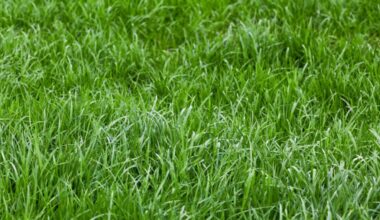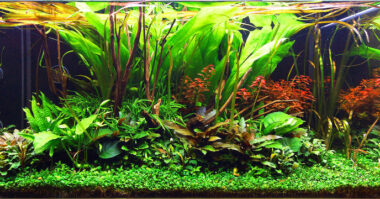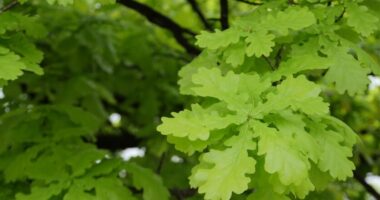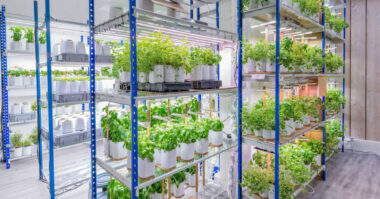Contrary to popular belief, the air inside our homes is much more polluted than the air outside, between 5 and 10 times in total. Indeed, indoor pollution is invisible and odorless, so we often ignore it.
Building materials, paints, cleaning products, varnishes, particle board furniture and floor and wall coverings produce volatile organic compounds (VOCs) that are released into our homes.
Contents
Do plants absorb carbon monoxide?
Some depolluting plants are indeed very effective in absorbing carbon monoxide, this is particularly the case of spider plants. It has been proven that the latter, absorbs almost all pollutants, including carbon monoxide.
How do depolluting plants work?
Plants feed on light, water and nutrients, but also on gases present in the air. Through their leaves, stems and trunks, plants absorb gases which are then transformed into nutrients by micro-organisms present in the soil and absorbed by the roots.
Plants also improve air quality by releasing oxygen and water vapor through their respiration. The larger the plant, the more gas is exchanged through its leaves. Finally, some plants are more fond of polluting gases than others. They are commonly called depolluting plants.
Why use depolluting plants?
Scientists have the proof: plants are among the best tools at our disposal to purify indoor air. The pollution that settles in our homes is both invisible and odorless.
Harmful to the health of individuals as well as pets, this pollution comes from building materials, floor and wall coverings, coatings, varnishes, as well as the cleaning products we use on a daily basis. Heating appliances also contribute to increased pollution in the home, without anyone noticing. In high doses, indoor pollutants can lead to significant health problems. In small doses, they cause allergies, headaches, nervousness, sleep disorders and asthma attacks.
The depolluting plants absorb, through their foliage, the airborne pollutants (benzene, formaldehyde, toluene, ammonia…) which are then filtered and conducted to the roots to be converted into healthy organic products. The process of transpiration then allows plants to emit oxygen in the form of water vapor. This is why some plants are qualified as “depolluting plants”, which are perfectly adapted to our interiors.
The limits of depolluting plants
Don’t be fooled, a few green plants will never be enough to transform polluted indoor air into pure air free of polluting gases, mold and allergenic dust.
In absolute terms, to really depollute the air in a room, you would need 2.4 plants per square meter, which is a real forest. Knowing that indoor air is up to 8 to 10 times more polluted than outdoor air (including in the city), it is also necessary to take simple hygiene measures to preserve the quality of the air:
- Ventilate every day.
- Monitor the humidity level of the room to avoid the development of mold.
- Vacuum rooms, furniture and carpets regularly to eliminate as much dust as possible.
- Limit the use of synthetic construction or decoration materials loaded with solvents (carpets, glues, insulation, paints, chipboard furniture…).
- Use natural cleaning products and ban synthetic perfumes.
- Do not smoke inside and burn incense and candles in moderation.
10 depolluting plants to install at home
1. The Ficus
It absorbs mainly formaldehyde, xylene and ammonia present in detergents.
It acts on cigarette smoke, air fresheners and varnishes.
It settles in the light and is particularly well suited to the interior of our houses and apartments.
If it is part of the most sold plants, it is also thanks to its great decorative power.
2. Philodendron
It absorbs mainly formaldehyde and pentachlorophenol.
We find these components in most materials used for furniture but also glue, varnishes and household products.
It is a plant which likes humidity and which will be able to also like in a bathroom for example.
The maintenance is easy and you will be seduced by its shiny foliage.
3. The fern
This is one of the most effective indoor plants for air pollution control.
Very effective thanks to its great power of absorption and rejection, it eliminates the majority of the products which one uses for the maintenance and the cleaning of the house.
But also those present in the materials which compose the furniture.
For indoor use, choose the Nephrolepis exaltata
4. The areca
The areca is not only one of the favorite and undoubtedly the most used indoor plants, it is also a depolluting plant.
It absorbs xylene and formaldehyde very well.
These products are found in paint and varnish but also in most cleaning products.
The areca likes sunny and bright places.
5. The calathea
The calathea likes particularly well in bright places but without direct sunlight.
Beyond its great decorative power thanks to its unique and original foliage, it purifies the ambient air of a multitude of more or less toxic substances.
The maintenance of the calathea is easy and requires almost no care while its presence gives a lot of pleasure.
6. Anthurium
The anthurium has become a must-have indoor plant.
It has a wonderful bloom and can last all year long if well cared for.
On top of that, it has the advantage of absorbing many chemicals like ammonia.
It is therefore perfect for adorning a kitchen or any other room in the house that is quite humid such as the bathroom.
7. The dieffenbachia
The dieffenbachia is native to Central America and Brazil.
Maintenance, repotting, watering or even exposure are all small gestures that will make your dieffenbachia even more beautiful.
It makes the happiness of our houses and apartment thanks to its great decorative power.
In addition to all these advantages, the dieffenbachia has the advantage of humidifying the air when it is too dry, very useful when there is an air conditioning
8. The dracaena
Contrary to what some varieties suggest, the dracaena is not a palm tree.
But its resemblance is confusing and the maintenance it needs is often close to that of a palm tree.
Both aesthetic and very easy to grow, it is one of the most appreciated and sold indoor plants.
Thanks to the dracaena, you absorb formaldehyde and benzene, which are found particularly in cigarette smoke
9. Croton
The croton is native to the Pacific Islands.
Maintenance, repotting, watering or exposure are small gestures that will make your croton even more beautiful.
It makes the happiness of our houses and apartment thanks to its great decorative power and its unique foliage.
But it also has a great depolluting power and fights effectively against formaldehyde.
10. The spathiphyllum
In our climates, this plant settles inside our houses and apartments.
It grows well when temperatures are around 68-72°F.
Both very decorative and easy to care for, Spathiphyllum amazes with its great ability to eliminate toxic chemicals.
It absorbs the compounds present in varnishes, plastics, paints and other materials of use present in the furniture.









